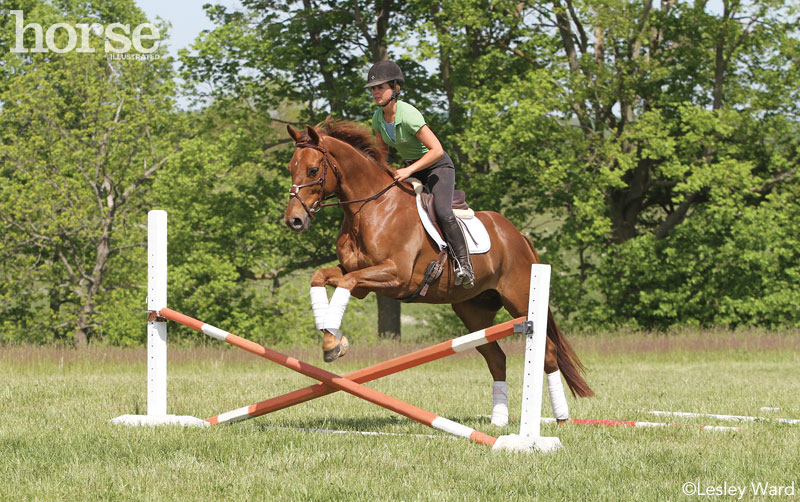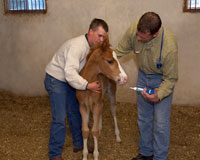
Q. I have a 4-year-old warmblood that I want to begin jumping. My vet is going to examine him to determine if his bones are mature enough to start jumping, but what is the process that he goes through to make this kind of determination?
Most likely you have just started this horse under saddle on a consistent basis and, in the process of teaching him the basics, you will begin the conditioning process. With conditioning comes strengthening and resiliency to withstand impact stress, up to a point. Too much of any repetitive exercise can injure the musculoskeletal system.
Conditioning the young horse is a many year process. Muscles and the cardiovascular system develop quickly over the course of six to 12 months, but bone and joints take two or three years to develop fully, while hooves also require lengthy time to respond to exercise stress. Radiographic exam (X-ray) reveals whether growth plates are closed, and by 4 years of age they will have been closed for some time. But that is not where the concerns arise. Jumping places its greatest impact on the joints and feet. As you train your horse in his skills, you’ll move up incrementally to more difficult work over many months and years, all the while developing his musculoskeletal system to adjust to slowly increasing challenges—there is no shortcut.
A 4-year-old horse won’t usually start out jumping high obstacles. After his initial training under saddle begins (walk, trot, canter), you can incorporate cavalletti poles and cross-rail grids to teach your horse about rhythm, pace and agility. None of these exercises are likely to overstress his joints or feet if applied appropriately for limited periods of time, two to three times a week. Moderation is key to keeping your young horse safe. Don’t overface him early on. After a year or two, your horse will then have the training and conditioning to take on higher challenges with less risk of injury.
Further Reading
Keeping Joints Healthy
Building a Sound Future
Nancy S. Loving, DVM, is a performance horse veterinarian based in Boulder, Colo. She is also the author of All Horse Systems Go.







These articles are brill at explaining concepts! They help me a lot as well, because I am soon going to apply for veterinary medicine and hope to become an equine vet. Thanks a bunch!
good information!
Very informative article